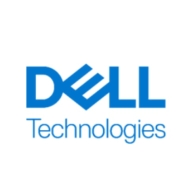

PowerEdge C and Cisco UCS E-Series Servers compete in the server market, primarily catering to high-demand environments. PowerEdge C may have the upper hand with its straightforward management and competitive pricing strategies, aligning better with customers seeking lower complexity and cost.
Features: PowerEdge C offers advanced virtualization capabilities with Intel Xeon processors, a tool-less design for easy maintenance, and the iDRAC feature for remote management. Cisco UCS E-Series provides efficient networking management through a single management console, enhanced visibility for disaster recovery, and robust reliability in hardware components.
Room for Improvement: PowerEdge C faces challenges with complex firmware updates, limited expansion due to product phaseout, and occasional compatibility issues with newer hardware and software. Cisco UCS E-Series struggles with cost efficiency, integration for smaller businesses, and requires better documentation for user navigation and multi-vendor compatibility.
Ease of Deployment and Customer Service: PowerEdge C offers flexibility in deployment across various environments and has mixed reviews on customer service with noted delays in support. Cisco UCS E-Series is mainly used on-premises, receiving positive feedback for technical support but criticized for complex issue resolution due to inaccessible documentation and specialized support requirements.
Pricing and ROI: PowerEdge C, while considered pricey, is viewed as offering reasonable value given its stability and performance. Pricing can become significant with additional features like iDRAC. Cisco UCS E-Series is typically more expensive, with higher upfront costs, yet both products meet performance expectations, showing potential for a good ROI.


Cisco UCS E-Series Servers are next-generation, power-optimized, x86, Intel Xeon 64-bit blade servers designed to be deployed in Cisco Integrated Services Routers Generation 2 (ISR G2) and the Cisco 4451-X ISR. These price-to-performance-optimized single-socket blade servers balance simplicity, performance, reliability, and power efficiency. They are well suited for applications and infrastructure services typically deployed in small offices and branch offices.
PowerEdge C help you to maximize hyperscale performance with up to 4 independent server nodes, flexible storage and shared infrastructure in a compact 2U chassis.
We monitor all Blade Servers reviews to prevent fraudulent reviews and keep review quality high. We do not post reviews by company employees or direct competitors. We validate each review for authenticity via cross-reference with LinkedIn, and personal follow-up with the reviewer when necessary.